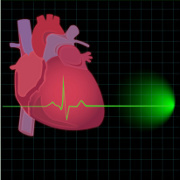 Photo: Getty Images
Photo: Getty Images
Men and women differ in just about every way imaginable. Men are the traditional hunters while women are the tenders of the hearth and food gatherers.
Papa explains the “facts of life” and mama kisses the hurts away and makes it all better. Women operate in Venus and most of the men I know definitely live in Mars.
Our heart health is no different and the way that heart disease manifests in women can be very different than it appears in men. One of the less well-known heart diseases that is unfortunately more prevalent in women is coronary microvascular disease.
Unlike coronary artery disease, also known as coronary heart disease or CHD, which affects large heart arteries, coronary microvascular disease, or MVD, affects the smallest heart arteries. Also known as cardiac syndrome X or non-obstructive CHD, MVD is more common in women than men, particularly after menopause.
Some researchers believe that the higher rates of MVD in women may be a result of the effects of lower estrogen levels experienced by postmenopausal women on existing MVD risk factors. It’s also believed that MVD may be the reason why death rates from heart disease have not declined as much in women as in men.
One of the challenges facing health care professionals and women is that MVD is not easily detected. The standard tests used to detect heart disease focus on detecting blockages in the large heart arteries.
Since MVD affects the small heart arteries, standard tests don’t catch problems with these tiny arteries. As a result, it’s possible to be a low risk for CHD but still have a high risk for heart disease due to undiagnosed MVD.
Many women may walk away from standard tests with a “good” report indicating a low risk for heart disease when in fact they simply don’t have the full heart health picture.
Because risk factors for MVD are similar to those for CHD, CHD will most likely be the suspected culprit if you are experiencing heart-related symptoms such as chest pain, low energy levels, difficulty breathing or shortness of breath, or unusual fatigue.
As a result, initial diagnostic tests will probably include procedures such as stress testing, coronary angiography, or cardiac MRI. It’s important to remember that even if these tests come back “clean” for CHD you may still be at risk for MVD.
If standard tests come back negative for CHD, but you have symptoms that the small heart arteries aren’t receiving enough oxygen, your doctor may have you complete the Duke Activity Status Index or DASI questionnaire.
The DASI questionnaire focuses on obtaining information regarding how your symptoms relate to routine daily tasks such as cooking, shopping, or working. In the beginning, most MVD symptoms occur during these types of routine activities.
The results will provide your doctor with more information about blood flow in the small arteries. Depending on the DASI results, your doctor may order additional diagnostic tests.
Treating MVD is primarily focused on treating the chest pain associated with MVD. If you have risk factors such as high cholesterol or high blood pressure, treatment will generally include medications and lifestyle changes designed to reduce or remove contributory risk factors for MVD.
Unfortunately, there are no definitive tests for MVD nor are there treatments specific to MVD. While low estrogen levels are suspect in the development of MVD, it’s still unknown exactly why MVD has such a preference for women.
If researchers’ suspicions are correct and MVD is responsible for the disparity in the decline in death rates between men and women due to heart disease, then it becomes even more important to find ways to easily diagnose MVD and identify it earlier.
Until additional research is conducted, women need to be aware that even if standard tests do not reveal the presence of CHD, they may still be at risk for MVD.
If you experience heart-disease related symptoms and standard tests are clear that you have CHD, make certain you ask your doctor if MVD could responsible.
For women who are symptom-free, discuss your risk factors for both CHD and MVD with your physician so that you have a complete picture of your heart health and risk for heart-related disease.
Sources:
How Does Heart Disease Affect Women? National Heart Lung and Blood Institute. 26 Sept 2011.
http://www.nhlbi.nih.gov/health/health-topics/topics/hdw
How is Coronary Microvascular Disease Diagnosed? National Heart Lung and Blood Institute. 02 Nov 2011. http://www.nhlbi.nih.gov/health/health-topics/topics/cmd/diagnosis.html
Reviewed February 23, 2012
by Michele Blacksberg RN
Edited by Jessica Obert






Add a CommentComments
There are no comments yet. Be the first one and get the conversation started!